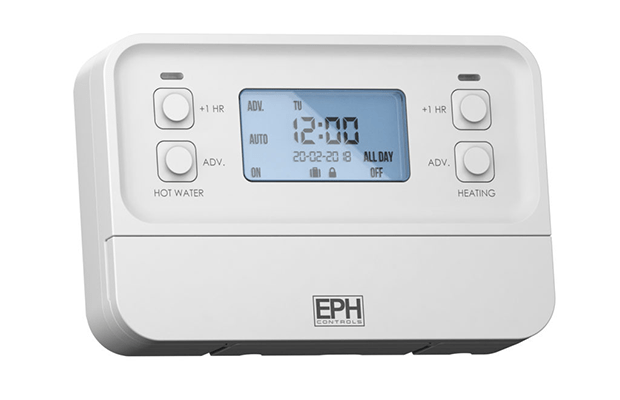Do you think about utilizing in-home remodeling? With an efficient heating system, those days of guesswork and cash consumption are gone.
Such devices as smart thermostats are allocated to improve the efficiency of utilization of the central heating system and give the opportunity to remotely control it through dedicated applications.
Moreover, these products are not simply smart enough to respond to humans but are also smart enough to figure out your daily routines and temperature preferences, amongst other smart features.
What is Smart thermostat?
Smart thermostats, with a highly convenient way of controlling them through the app and the Internet, provide user flexibility. Unlike conventional ones, they allow you to be at a photo distance and thus control heating if plans change. These utility options smart thermostat make come such as geofencing, pipe freeze prevention, and usage reports.
What is a Programmable thermostat?
A programmable thermostat is a digital efficient temperature control lock for your home. It is not connected to the internet and cannot be remotely controlled. Instead of you turning it off and on, the switch can be put on at a set time and off many times, thus reducing the amount of money spent on power bills.
Instead of a sophisticated “smart” thermostat that typically starts at £100, it is way cheaper, generally priced in the bracket of £20 and £100. Whatever you choose – a smart or a programmable one – it is essential to master the use of it to get the most from it.
Heating smart thermostats features
Smart thermostats vary in features, but some key ones to consider are:
Geofencing: A thermostat can adjust its temperature level automatically; whether at home or your office, your phone or laptop are the devices used to detect your location.
Remote Access: Regulate your thermostat from anywhere which is convenient as you may adjust to the change of routine.
Motion and Proximity Sensors: Motion sensors adjust the temperature as you move around inside your house.
Smart Home Integration: Be accessible for voice control of an assistant like Alexa or Google.
Learning: The thermostats tune to your habits. They cool or heat your home in accordance with the temperature you have set.
Simple Installation: Many models include DIY kits, but seek help from professionals as and when necessary.
How to install a smart thermostat for heating
- At the circuit breaker, stop the power supply.
- Take down the old thermostat and discard it.
- Mark the mounting plate position for the new thermostat.
- Join the cables with the proper points on the newly installed thermostat.
- Use the wire nut to connect the thermostat to the mounting plate.
- Reset the circuit breaker at the power.
- In settings menu, connect to Wi-Fi available and configure the settings to match.
- Perform a control check of the thermostat to ensure it works correctly.
The Best Types of Smart Thermostat
Here’s a brief overview of the top smart thermostat:
Nest learning thermostat:
With its beautiful design and user-friendly interface, Nest is the top-selling smart thermostat option today.
Hive:
Hive, an offspring of British Gas, comes with superior features but at a slightly higher price, almost making it sound like a human thing. For example, transferring to a less expensive car from an older but more costly one and upgrading from an older version can be more affordable.
Tado smart thermostat
Tado is the Tado that it is with this innovative geofencing feature. Through this, the system will be able to control the temperatures in sync with your arrival at your home.
Ecobee:
Like Nest, but more economical, Ecobee provides features and functionalities that are just as good as the leading brand, thus making it a neighborhood provider.
Honeywell:
Much like Nest, Honeywell’s smart thermostat looks almost the same but has some unique features that fill the same gap in the market.
Bosch:
The smart radiator thermostat from Bosch lets you control the temperature and saves you energy by heating only the rooms you are in and by detecting if the doors or windows are open. It is also really cheap to start.
Why does my smart thermostat work up to 80 degrees?
There are many factors, which can result in your thermostat reading 80 degrees. First, confirm that it is not too cold. It also could be faulty or two lamps may interfere to a second another.
Furthermore, the potential complications arise on your heating system since it can go beyond what it should, making it overheat. Repair the issue by setting the thermostat differently or seeing a professional so he could look for the exact problem.
Checking and synchronizing the settings of two thermostats to ensure the best comfort levels available in both zones.
How to use a thermostat for heating?
- Use the controls to select the temperature you want your home to be at.
- The heating setting will choose the heating mode of the thermostat.
- Modify the Timetable for the purpose of automatic switch-on and off heating.
- Check the temperature rise and, if needed, adjust it so you are comfortable.
With these easy-to-follow instructions, the thermostat will go on to systematically regulate the home heating.
How to manage one heat zone with two heating system thermostats
Determining the temperature of one zone with two thermostats is an easy thing to do. Both thermostats should be set similarly so there will not be any conflicts.
If one area of the house is more comfortable to cool down, gently the thermostat temperature up. That said, a cease in the temperature gap may have to be accompanied by a compensating or shifting mechanism.
Guaranteeing an equal distribution of warmth. Besides that, both devices must not be positioned near heat sources or drafts to assess the zone’s temperature accurately. You are doing such procedures occasionally, like periodically
FAQs
What is the best temperature for central heating?
The most preferred temperature of the thermostat for central heating is the one that stands between 68 to 72 degrees Fahrenheit. This temperature keeps both energy saving and comfortableness.
What temperature do you keep your smart heating thermostat at?
I choose to keep my thermostat within my discomfort temperatures which range from 68 to 72 degrees Fahrenheit.
Why to choose an ENERGY STAR Certified Smart Thermostat?
Purchasing an ENERGY STAR certified smart thermostat is a smart decision when looking at ways to cut energy and save money consumption.
These thermostats are advanced and capable of better heating and cooling utilization and highly efficient technology.




